Daryush D. Mehta
Effects of Recording Condition and Number of Monitored Days on Discriminative Power of the Daily Phonotrauma Index
Sep 04, 2024


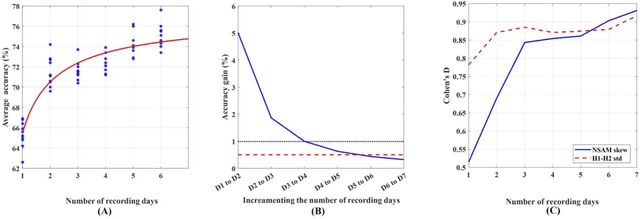
Abstract:Objective: The Daily Phonotrauma Index (DPI) can quantify pathophysiological mechanisms associated with daily voice use in individuals with phonotraumatic vocal hyperfunction (PVH). Since DPI was developed based on week-long ambulatory voice monitoring, this study investigated if DPI can achieve comparable performance using (1) short laboratory speech tasks and (2) fewer than seven days of ambulatory data. Method: An ambulatory voice monitoring system recorded the vocal function/behavior of 134 females with PVH and vocally healthy matched controls in two different conditions. In the lab, the participants read the first paragraph of the Rainbow Passage and produced spontaneous speech (in-lab data). They were then monitored for seven days (in-field data). Separate DPI models were trained from in-lab and in-field data using the standard deviation of the difference between the magnitude of the first two harmonics (H1-H2) and the skewness of neck-surface acceleration magnitude. First, 10-fold cross-validation evaluated classification performance of in-lab and in-field DPIs. Second, the effect of the number of ambulatory monitoring days on the accuracy of in-field DPI classification was quantified. Results: The average in-lab DPI accuracy computed from the Rainbow passage and spontaneous speech were, respectively, 57.9% and 48.9%, which are close to chance performance. The average classification accuracy of in-field DPI was significantly higher with a very large effect size (73.4%, Cohens D = 1.8). Second, the average in-field DPI accuracy increased from 66.5% for one day to 75.0% for seven days, with the gain of including an additional day on accuracy dropping below 1 percentage point after 4 days.
Toward Generalizable Machine Learning Models in Speech, Language, and Hearing Sciences: Sample Size Estimation and Reducing Overfitting
Aug 30, 2023Abstract:This study's first purpose is to provide quantitative evidence that would incentivize researchers to instead use the more robust method of nested cross-validation. The second purpose is to present methods and MATLAB codes for doing power analysis for ML-based analysis during the design of a study. Monte Carlo simulations were used to quantify the interactions between the employed cross-validation method, the discriminative power of features, the dimensionality of the feature space, and the dimensionality of the model. Four different cross-validations (single holdout, 10-fold, train-validation-test, and nested 10-fold) were compared based on the statistical power and statistical confidence of the ML models. Distributions of the null and alternative hypotheses were used to determine the minimum required sample size for obtaining a statistically significant outcome ({\alpha}=0.05, 1-\b{eta}=0.8). Statistical confidence of the model was defined as the probability of correct features being selected and hence being included in the final model. Our analysis showed that the model generated based on the single holdout method had very low statistical power and statistical confidence and that it significantly overestimated the accuracy. Conversely, the nested 10-fold cross-validation resulted in the highest statistical confidence and the highest statistical power, while providing an unbiased estimate of the accuracy. The required sample size with a single holdout could be 50% higher than what would be needed if nested cross-validation were used. Confidence in the model based on nested cross-validation was as much as four times higher than the confidence in the single holdout-based model. A computational model, MATLAB codes, and lookup tables are provided to assist researchers with estimating the sample size during the design of their future studies.
Longitudinal Acoustic Speech Tracking Following Pediatric Traumatic Brain Injury
Sep 09, 2022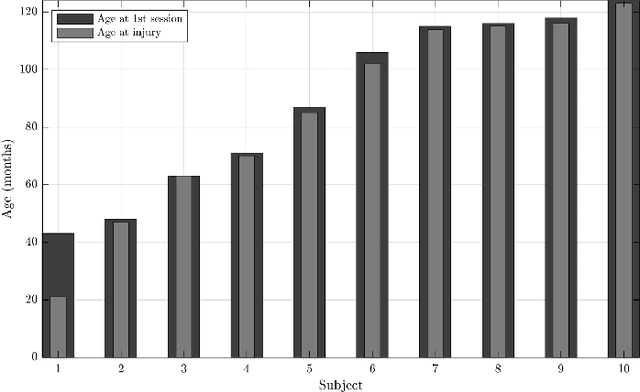
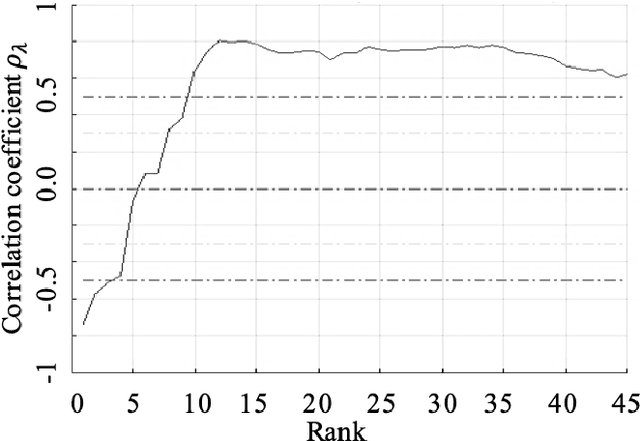
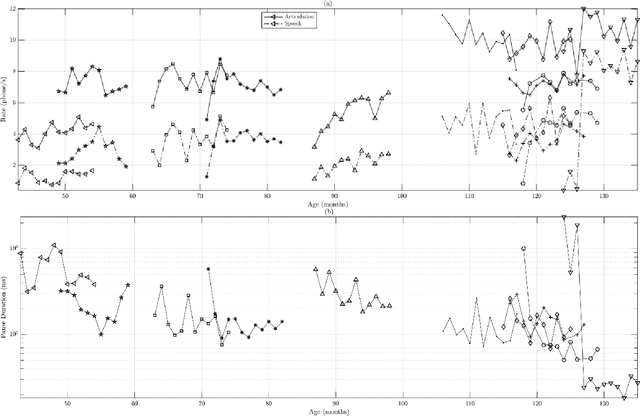
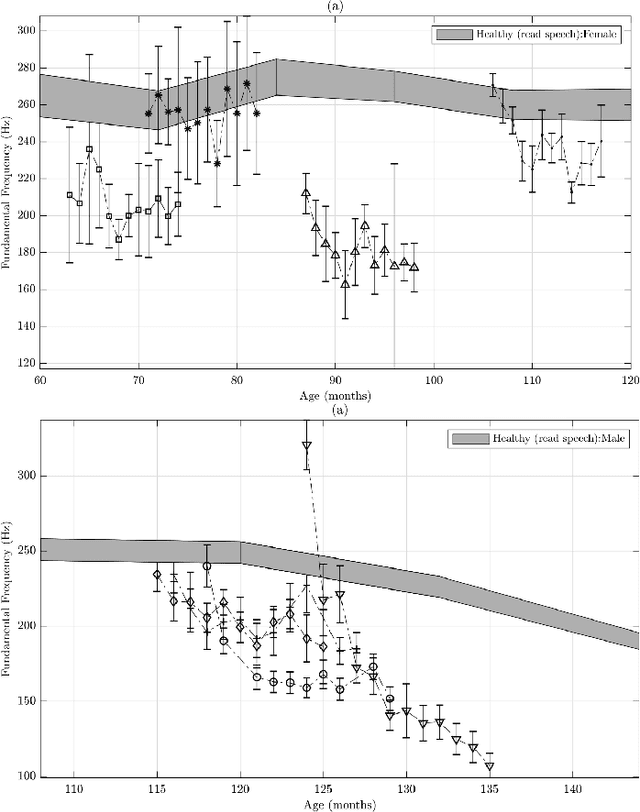
Abstract:Recommendations for common outcome measures following pediatric traumatic brain injury (TBI) support the integration of instrumental measurements alongside perceptual assessment in recovery and treatment plans. A comprehensive set of sensitive, robust and non-invasive measurements is therefore essential in assessing variations in speech characteristics over time following pediatric TBI. In this article, we study the changes in the acoustic speech patterns of a pediatric cohort of ten subjects diagnosed with severe TBI. We extract a diverse set of both well-known and novel acoustic features from child speech recorded throughout the year after the child produced intelligible words. These features are analyzed individually and by speech subsystem, within-subject and across the cohort. As a group, older children exhibit highly significant (p<0.01) increases in pitch variation and phoneme diversity, shortened pause length, and steadying articulation rate variability. Younger children exhibit similar steadied rate variability alongside an increase in formant-based articulation complexity. Correlation analysis of the feature set with age and comparisons to normative developmental data confirm that age at injury plays a significant role in framing the recovery trajectory. Nearly all speech features significantly change (p<0.05) for the cohort as a whole, confirming that acoustic measures supplementing perceptual assessment are needed to identify efficacious treatment targets for speech therapy following TBI.
Uncovering Voice Misuse Using Symbolic Mismatch
Aug 08, 2016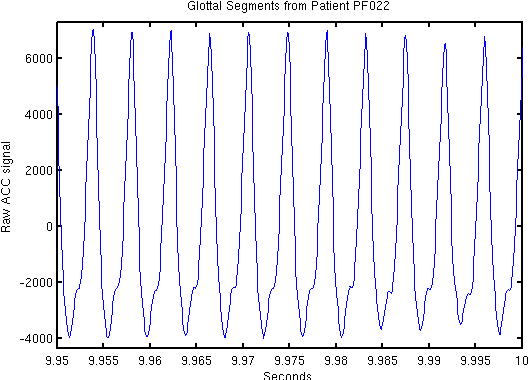
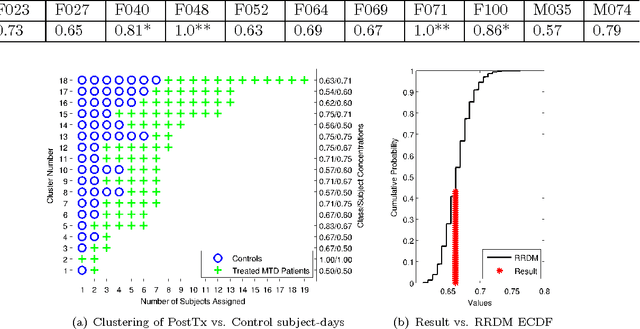

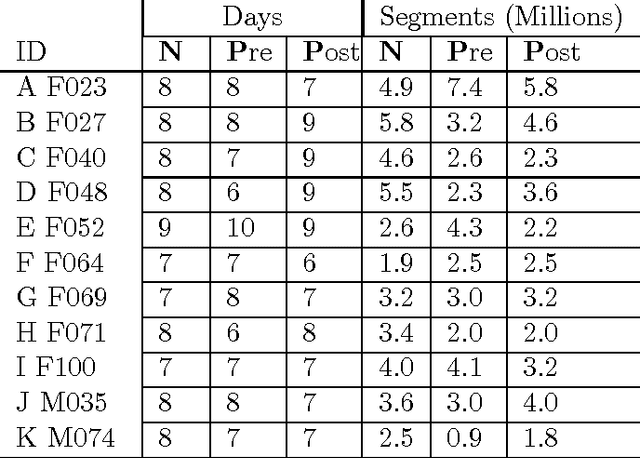
Abstract:Voice disorders affect an estimated 14 million working-aged Americans, and many more worldwide. We present the first large scale study of vocal misuse based on long-term ambulatory data collected by an accelerometer placed on the neck. We investigate an unsupervised data mining approach to uncovering latent information about voice misuse. We segment signals from over 253 days of data from 22 subjects into over a hundred million single glottal pulses (closures of the vocal folds), cluster segments into symbols, and use symbolic mismatch to uncover differences between patients and matched controls, and between patients pre- and post-treatment. Our results show significant behavioral differences between patients and controls, as well as between some pre- and post-treatment patients. Our proposed approach provides an objective basis for helping diagnose behavioral voice disorders, and is a first step towards a more data-driven understanding of the impact of voice therapy.
 Add to Chrome
Add to Chrome Add to Firefox
Add to Firefox Add to Edge
Add to Edge